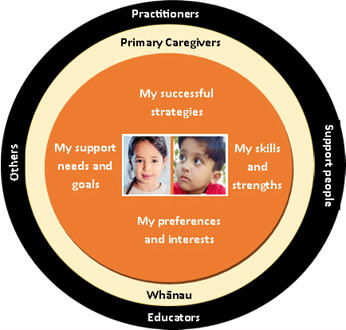Who finds transitions or changes easy or convenient, asks speech language therapist Estelle Pretorius? At the best of times, it takes bravery, skill, practice, planning and time to process.
EARLY TRANSITIONS can be successful and seamless when time is dedicated to preparing for the shift and keeping the child at the centre of the transition.
Transitioning autistic children from early childhood education into a school setting is significant and can involve anxiety and concern for primary caregivers.
For these transitions to be successful, they require thoughtful planning and consideration.
The most important thing to keep at the centre of the transition is the subject of the transition: the child.
When we do so, the planning and preparation are individualised to the child’s needs, strengths, and interests.
Two of the key recommendations in the recently published New Zealand Autism Spectrum Guideline Supplementary Paper on Transitions (Broadstock, 2019) address person-centred transition planning.
Children’s voices, preferences, and strengths should be front and centre when guided through significant changes.
This recommendation is echoed throughout the Guidelines (Ministries of Health and Education, 2016) but also heard in the perspectives of parents and caregivers (e.g., Stoner et al., 2019) and in the national guidelines for best practice in early childhood intervention (ECIA, 2020).
Can we imagine how different such a critical transition would be if a child’s strengths, interests, preferences, and support needs were at the centre of all planning, preparation, and communication, related to their transition into school?
A successful transition is child-centred, family and whanau-focused and offers wrap-around, coordinated support from practitioners, educators, support people, and other systems for support (see figure 1).
Updated Guidelines for Transitions
The supplementary paper on school transitions provides updated guidelines for successful transitions into and between primary and secondary schools and within year levels. This paper provides a set of recommendations relating to school transitions and good practice points. (See Summary Guidelines recommendations)
When adopted, these recommendations can lay a strong foundation for your child’s successful start to their formal education. Though each school transition may take on a different pathway to success, some principles remain essential; informed decision-making, person-centred and shared planning for individualised support, and a strong culture of relationship building and belonging.
Informed Decision Making
Pick a school that is willing to grow with your child and adopts an outcomes-based approach. Understanding a school’s inclusive culture and practices is extremely helpful when choosing a school for your child.
Your partnership with the school around your child’s strengths, skills, preferences, interests, support needs, and goals will be integral to their belonging and settling into a school.
Begin to connect with the school community, understand its people, volunteer, and offer your expertise to the school, and embrace opportunities to learn about the school’s culture through events.
Learn about the school’s values by searching their school web page, scheduling an appointment with key educators at the school and asking questions about their approach to children with additional learning needs.
A school that endorses family-centred and strengths-based values and adopts an outcomes-based approach will set you up for a successful transition and a sustained positive partnership that will allow your child to master skills and flourish in relationships.
Person-centred Planning
Introduce your child and family to the school. Develop a pack of resources to help others understand and learn from your child.
Share your expertise about your child and the tools that have been successful in your child’s early education, in the community and at home. Co-develop these resources with other key adults that know your child well.
Allow them to learn about your child’s interests, preferences, and strengths by observing your child in various settings and regularly connecting with familiar supporting adults such as the child’s early education team or any support workers with whom your child has an established relationship.
Give your child a voice by asking him or her about the things they enjoy or dislike, things that make them anxious, and things that make them feel calm or organised. Visual communication strategies such as self-regulation charts, emotion thermometers, picture choices, and personal stories may help your child inform the school about their preferences.
Build a repertoire of activities and environments where your child flourishes; this information would be valuable for the school to know. Setting the school up to know as much about your child as possible is an essential first step.
Shared Planning for Individualised Support
Understand your child’s support needs. Discuss available support with the school and ask how accessible it may be to your child. Collaborate with the school around supports and strategies you already have in place and work together to establish these in your child’s new setting. Allow time for educators and practitioners to learn from your child about what his or her needs or goals could be at school. Work with the school to plan as many opportunities as possible for your child to work towards these goals across the school setting, the school community and home.
Develop a coordinated plan with the school to meet your child’s support needs. Co-create a safe, calming, and conducive learning environment for your child. Partner with the education team to create a safe space designed with the child rather than for the child.
Consider how the classroom setting, the outdoor play areas, and the social opportunities can be modified or enhanced. Clear and concise communication about the action plan, timeline, roles, responsibilities, and social supports will ensure your child has the best possible start in their new learning environment. Most importantly, establish a shared review process that reviews your child’s support needs, successes, and preferences.
Relationship and Belonging
Establish your child’s belonging in the school by connecting them with the school community and social supports. Find out about peer groups connected to your child’s interests and work together to integrate your child successfully into this group.
Observe your child during playtime and learn from the choice he or she makes. Develop a plan where they can engage in regular opportunities to connect with a peer group and feels acknowledged and included.
Recognise that your child may have anxiety about engaging with others at school and work with the teaching team to recognise the triggers, minimise the environmental triggers where possible, and provide support to succeed during these interactions. Early success in peer groups will have long-term positive outcomes for your child at school. Also, as parents, reach out to resident families and create a peer support group where you can share ideas, experiences, and expertise.
Conclusion

Estelle Pretorius
The key to any successful transition is to trust the process, explore the possibilities together, and celebrate the differences. This is especially relevant during transitions early childhood education to a more formal school environment.
Keeping the child at the centre of the transition and building strong community and wrap around support, will create a safe place to explore change and possibilities together.
- Estelle Pretorius is a member of the Altogether Autism Professional Advisory Group. She is also a speech-language therapist and doctoral student at Massey University.
References
Broadstock, M. (2019). New Zealand Autism Spectrum Disorder Guideline’s supplementary paper on the effectiveness of strategies for supporting school transitions for young people on the autism spectrum. INSIGHT Research, Christchurch.
Early Childhood Intervention Australia. (2020). The national guidelines for best practice in early childhood intervention.
Ministries of Health and Education. (2016). New Zealand Autism Spectrum Disorder Guideline (2nd ed.). Ministry of Health.
New Zealand Autism Spectrum Disorder Guideline | Ministry of Health NZ
Stoner, J., Angell, M., House, J., and Bock, S. (2019). Transitions: Perspectives from parents of young children with Autism Spectrum Disorder (ASD). Journal of Developmental and Physical Disabilities 2007;19(1):23-39.



